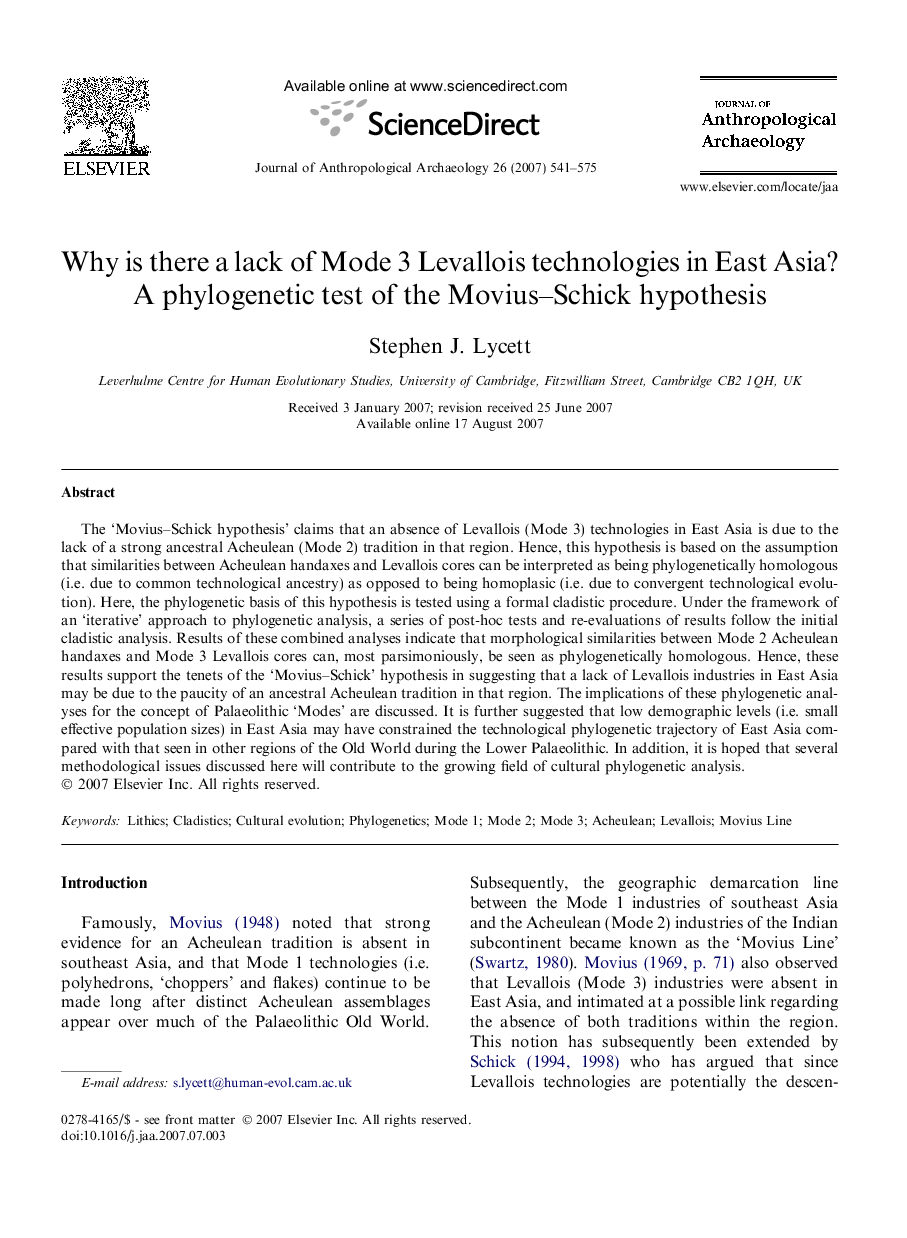| Article ID | Journal | Published Year | Pages | File Type |
|---|---|---|---|---|
| 1035030 | Journal of Anthropological Archaeology | 2007 | 35 Pages |
The ‘Movius–Schick hypothesis’ claims that an absence of Levallois (Mode 3) technologies in East Asia is due to the lack of a strong ancestral Acheulean (Mode 2) tradition in that region. Hence, this hypothesis is based on the assumption that similarities between Acheulean handaxes and Levallois cores can be interpreted as being phylogenetically homologous (i.e. due to common technological ancestry) as opposed to being homoplasic (i.e. due to convergent technological evolution). Here, the phylogenetic basis of this hypothesis is tested using a formal cladistic procedure. Under the framework of an ‘iterative’ approach to phylogenetic analysis, a series of post-hoc tests and re-evaluations of results follow the initial cladistic analysis. Results of these combined analyses indicate that morphological similarities between Mode 2 Acheulean handaxes and Mode 3 Levallois cores can, most parsimoniously, be seen as phylogenetically homologous. Hence, these results support the tenets of the ‘Movius–Schick’ hypothesis in suggesting that a lack of Levallois industries in East Asia may be due to the paucity of an ancestral Acheulean tradition in that region. The implications of these phylogenetic analyses for the concept of Palaeolithic ‘Modes’ are discussed. It is further suggested that low demographic levels (i.e. small effective population sizes) in East Asia may have constrained the technological phylogenetic trajectory of East Asia compared with that seen in other regions of the Old World during the Lower Palaeolithic. In addition, it is hoped that several methodological issues discussed here will contribute to the growing field of cultural phylogenetic analysis.
